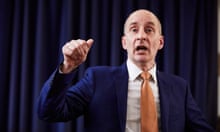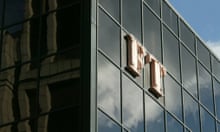The Financial Times, long regarded as a reliable reporter of news, was delighted two weeks ago to report news of its own: it announced that it had signed up 1 million paying readers. Its understandably excited editor, Lionel Barber, tweeted that the paper had managed to pass the milestone “one year ahead of schedule”.
Note that significant reference to “schedule”. It says so much about the modern FT’s outlook. In a digital ecosphere where the story about traditional newspapers in the developed world has been one of retrenchment here is a paper with a plan. It is looking towards the future with a positive aim of expansion while many print rivals are engaged in the sad business of managing decline.
For those of us who have followed the FT’s business throughout this millennium, it should not be a surprise. It was quicker than most to seize on a winning twin strategy: pioneering online innovation while building a global, as distinct from UK, news brand. Even so, securing 1 million subscribers, is a terrific achievement.
I happened to bump into a former FT group chief executive, David Palmer, last week and he was full of admiration for what his old paper has achieved. “It really is something,” he said. “I couldn’t be more pleased for them.” Given that he departed as long ago as 1993, his uninhibited praise carries weight.
The current chief executive, John Ridding, sees the achievement as “an historic moment” while emphasising that “it has been hard work to get there”. He says: “It is the culmination of a journey that began in 2007. Our investment in digital and our pioneering of a subscription model has proved that quality journalism is a growth business. At its heart is our belief in the enduring value of independent, authoritative and reliable reporting in an era of fake news.”
Barber, naturally enough, is eager to underline that the FT’s editorial content has been the major factor in attracting a growing audience. During an interview, he referred variously to his team’s “deep and original reporting”, to their “gold standard journalism” and their continuing commitment to the kind of agenda-setting coverage that earned the FT the “news provider of the year” title in the 2018 British journalism awards.
Both Ridding and Barber are speaking as the paper moves across from the south side of Southwark Bridge into the City and back into Bracken House, the pink-stoned building it left 30 years ago. It has, of course, been revamped into a hi-tech office. In company with Hirotomo Nomura, senior managing director of the paper’s owner, Nikkei, they recently performed a spoof ribbon-cutting ceremony.

The coincidence of the move and the attainment of the subscription landmark has boosted the FT’s internal confidence. It has also justified its decision to charge for online access, which has developed over time. In 2007, it introduced a metered paywall, which gave registered readers three free articles a month before demanding that they pay for more. In 2015, readers were given the chance to sample content through a month-long access. This sampling has since been amended with a so-called “dynamic barrier”, but little editorial is available before browsers are confronted by a hard paywall.
As well as the FT has done with this model, there is room, a great deal of room, for improvement.
It can be argued that the paper has little chance of attracting new readers in Britain, where its print version holds relatively steady at a daily average of about 60,000 while online subs are up by 8% year on year.
Where there is a need to grow is the United States. Its major competitor there, the Wall Street Journal, boasts a total of 2.5 million subscribers (1.5 million of whom are digital). Although the FT has made inroads, Barber acknowledges that the paper must do better and says he has strengthened his New York-based “assets” in order to widen its US appeal. In order to boost its profile, the FT began promoting itself last year with digital displays of its Open Minds campaign in city centres across the States.
He is also aware of the low female readership. Only a quarter of the FT’s audience are women and he believes it possible to do much better. Similarly, the hunt is on for younger readers. To that end, the FT, acting on the suggestion of a 16-year-old intern, has offered school subscriptions, which have been taken up by 2,000 schools worldwide. Barber is also placing a great deal of faith in the recruitment of a new female executive, Janine Gibson, the former BuzzFeed editor-in-chief who held senior roles at the Guardian before that. As an assistant editor, says Barber, her major job will be to head up special projects and thereby “add new creative dimensions” to the paper.
Barber, like Ridding, stresses that the pledge made in 2015 by Nikkei, when it acquired the FT from Pearson, not to interfere in editorial matters has been punctiliously observed. For Ridding, Nikkei’s ownership has meant that he spends more time than he might wish on a plane. He has also struggled with attempts to learn Japanese. “I had a lesson this morning,” he said. “My teacher said I’m making good progress but jet lag is not good for the memory.” He is more reluctant to talk about the controversy over his wages, pointing out that Nikkei sets his pay package. He agreed to take a pay cut last year after some of the paper’s 570 staff complained about his being given a £500,000 rise in addition to his £1.1m salary. He responded by agreeing to give up the extra, investing it in a fund to reduce the FT’s gender pay gap.
He is altogether keener to point to the group’s overall performance. Its revenue in 2018 reached £383m, up by more than £5m on the year before, while operating profit rose by £500,000 to £25m. That growth, he says, was driven by the 8% increase in online revenues. And it is clear just how important subscriptions have become to the FT’s business model because advertising revenue declined, with digital down 3% and print down 5%.
Long gone are those days when Palmer was at the FT and, as he pointed out, advertising then accounted for 80% of the paper’s revenue. Now the situation has reversed and it’s all about income from readers. There is a purity about that relationship, is there not? The “middle man”, as it were, is disappearing.
I couldn’t count the number of times Barber and Ridding, whom I interviewed separately, used the phrase “quality journalism” as the reason for their paper’s success.
It is, after all, the whole point of the exercise.










